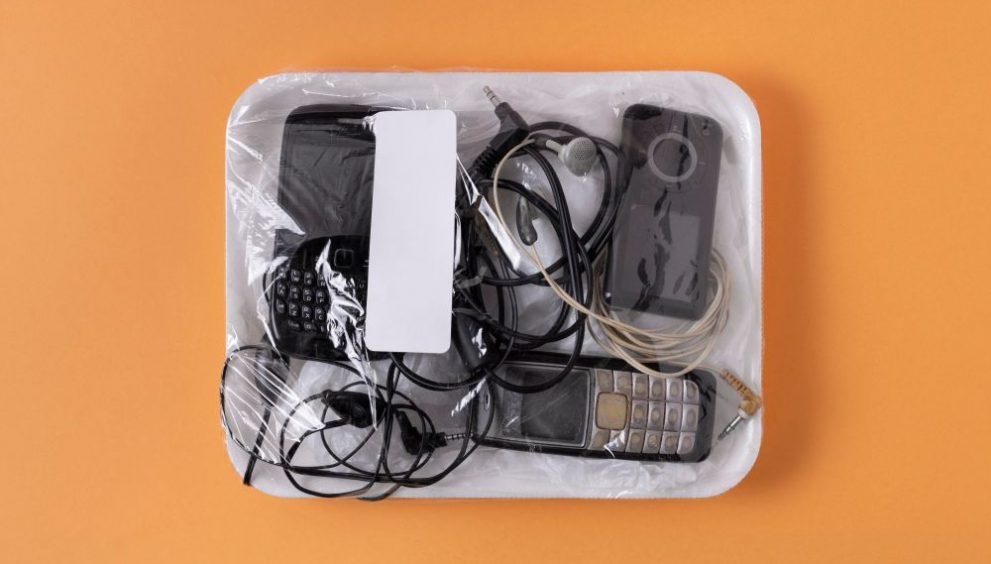When upgrading to a new phone, computer, or other electronic device, it’s essential to properly dispose of your old devices to protect your personal data. Simply deleting files or performing a factory reset isn’t enough to ensure your sensitive information is secure. This guide will walk you through the steps to safely transfer data from old phone to new, securely wipe your devices, and dispose of them responsibly.
Failing to properly dispose of old data can lead to serious consequences, such as identity theft, financial fraud, and privacy breaches. By following best practices for data destruction and disposal, you can protect yourself, your family, and your business from these risks.
Why Secure Data Disposal is Essential
When you dispose of old devices without properly erasing your data, you’re putting your sensitive information at risk. Hackers and cybercriminals can use data recovery tools to access deleted files, including:
- Financial records and bank account details
- Personal photos and videos
- Passwords and login credentials
- Business documents and customer data
Identity thieves can use this information to open new accounts, make fraudulent purchases, or even steal your identity. Businesses that fail to securely dispose of customer data can face legal penalties and reputational damage. Additionally, improperly disposed electronics can harm the environment. Many devices contain toxic materials like lead, mercury, and cadmium that can contaminate soil and water if sent to landfills.
How to Transfer Data from Your Old Phone to a New One Safely
Before disposing of your old phone, it’s important to transfer data from your old phone to your new device. Here are some secure methods:
- Cloud Backup: Use services like Google Drive, iCloud, or OneDrive to back up your photos, contacts, and other important data. Ensure your cloud account is protected with a strong password and two-factor authentication.
- Wired Transfer: Connect your old and new phones with a USB cable and use the manufacturer’s data transfer tool, such as Samsung Smart Switch or Apple’s Quick Start.
- External Storage: Copy your data to an external hard drive or USB flash drive. Encrypt the drive with a strong password for added security.
- Verify Both Devices Are Updated: Ensure both old and new phones have the latest operating system updates installed. This avoids compatibility issues and improves the security of the transfer process.
- Perform a Factory Reset on the Old Phone: After ensuring all data is safely transferred and backed up, factory reset the old phone to wipe all personal information. This is critical for safeguarding your privacy if you plan to sell or recycle the device.
Remember to remove your SIM card and any external storage cards from your old phone before disposing of it.
How to Delete Sensitive Data Before Disposal
To delete sensitive data and prevent unauthorized access, you need to go beyond a simple factory reset. Here are some methods for securely erasing your data:
- Overwriting: Use data erasure software like DBAN or Eraser to overwrite your device’s storage with random data multiple times. This makes it much harder for deleted files to be recovered.
- Encryption: Encrypt your device’s storage with a strong password before performing a factory reset. This adds an extra layer of protection if someone tries to recover your data.
- Physical Destruction: For maximum security, physically destroy the storage components of your device. Shred hard drives, CDs, and USB drives, or use a hammer to smash the storage chips in phones and tablets.
Secure Data Disposal Methods for Old Devices
Once you’ve erased your data, it’s time to dispose of your old devices responsibly. Here are some secure data disposal methods:
- Recycling: Take your devices to a certified e-waste recycling center. Many electronics retailers and local governments offer e-waste recycling programs. Ensure the recycler follows strict data destruction standards.
- Donation: If your device is still functional, consider donating it to a charity or non-profit organization. However, make sure to securely wipe your data first.
- Manufacturer Take-Back: Some device manufacturers offer take-back programs for old devices. They will securely destroy your data and recycle the materials.
- Professional Data Destruction: For businesses or individuals with highly sensitive data, consider hiring a professional data destruction service. They use specialized equipment to ensure complete data disposal.
How to Secure Your Data and Devices During Transition
In addition to securely erasing and disposing of your old devices, it’s important to protect your data during the transition process. Here are some tips:
- Use strong, unique passwords for all your accounts and devices
- Enable two-factor authentication whenever possible
- Encrypt your backups and external storage devices
- Be cautious when transferring data over public Wi-Fi networks
- Keep your new devices updated with the latest security patches and antivirus software
Consider using comprehensive security software like Quick Heal Total Security to protect your devices from malware, phishing attempts, and other online threats.
Stay Secure with Quick Heal
Protecting your personal and business data is more important than ever. When upgrading to new devices, it’s crucial to follow best practices for secure data destruction, transfer, and disposal. By securely erasing your old data, using secure data disposal methods, and protecting your devices during the transition process, you can minimize the risk of data breaches and identity theft.
Remember, taking the time to properly dispose of your data and devices is a small price to pay for the peace of mind that comes with knowing your sensitive information is secure.
Check Out Our Full Antivirus Range



